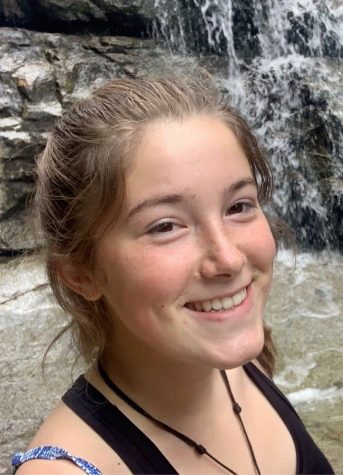The Legacy of the Presidential Portrait
March 22, 2021
Beginning with George Washington, the first president of the United States, “it has been traditional for the president… to have an official portrait taken during their time in office,” as stated in Wikipedia. Washington served two terms as president, from the years 1789 to 1797. Due to the lack of photography during this time period, paintings, traditionally oil-on-canvas, were how people were documented. Most citizens of the United States only knew what Washington looked like based on paintings. People to this day debate over which portrait of Washington is the most accurate. Despite America’s technological advancements over the years, the tradition of an official presidential portrait carries on. Junior Zach Sevart adds that he thinks “the tradition started mostly because of limited technology in which painting a picture would be the best way to preserve the history of our presidents in the 18th and 19th century.” He also states that “nowadays… it is a trend for presidents to still get their own even though we have access to photography.”
There are only two complete collections of official presidential portraits, according to Smithsonian Magazine: “One is held privately by the White House, the other is available to the public at the Smithsonian’s National Portrait Gallery in Washington, D.C..” Smithsonian states that the gallery’s overall mission is “to tell the American story through the individuals who have shaped it.” This collection includes both official and unofficial portraits of former presidents. The Smithsonian’s National Portrait Gallery is also virtually displaying their interactive collection of presidential portraits on their website.
Throughout the years, artists have produced bold and unique work, singling them out from the rest. Although the more traditional medium is oil, artists have also used watercolor, and even sculpted portraits out of clay and other materials. One of the most criticized, yet my personal favorite, is Aaron Shikler’s portrait of John F. Kennedy. As reported by The White House Historical Association, Kennedy was the 35th president of the United States and served from 1961 up until he was assassinated in 1963. His 50 x 34-inch, oil-on-canvas painting was made in 1970, seven years after his death, at the request of his wife, Jacqueline Kennedy. According to Town & Country, Shikler said in an interview with People in 1981 that the only stipulation from Jackie was, “I don’t want him to look the way everybody else makes him look, with the bags under his eyes and that penetrating gaze. I’m tired of that image.” For inspiration, “Shikler turned to photographs of the late president to prepare the initial sketches, but he eventually chose an image of Ted Kennedy.” This image depicted Ted standing over John’s grave with his arms crossed and head down. This portrait did, however, receive its fair share of controversy, due to John’s obscured face. Shikler was accused of thinking Kennedy was a martyr. Shikler later defended himself in an interview saying that he painted Kennedy that way to portray him as a thinker and humble.
A lot of thought goes into who creates the portrait. Sophomore Ruby May says, “If I were to have a portrait [done] of myself, I would have someone in Seattle [do it], like a local artist.” Sevart says, “If I were to have my portrait painted, I would have it painted by Takashi Murakami. His style isn’t as professional, but his psychedelic themed painting is visually appealing and exciting which would set me apart from other presidential portraits.” Conservative Daily News says that the process is long, and the “museum’s curators create a list of artists to paint the president and first lady’s paintings.” “After the president and first lady give their input on artists they prefer to paint the portraits, the museum will start to “raise private funds to actually commission the artworks.’”
Former president and first lady Barack and Michelle Obama’s portraits also received a lot of attention. Not only did they become “the first presidential couple to be painted by African American artists,” as stated by Inside Edition, but both of their portraits had hidden meanings. Stated in Newsweek, “The former president and first lady, known for opening the White House doors to black artists, have chosen stereotype-breaking painters Kehinde Wiley and Amy Sherald to paint their likeness.” Barack’s portrait featured specific plants in the backdrop such as “jasmin,” which “represents his birthplace of Hawaii, African blue lilies express his father’s Kenyan heritage and chrysanthemums are the official flower of Chicago.” Sevart says that his favorite presidential portrait is Barack Obama’s “because of how different it is from any other president’s. It portrays Obama sitting down on a chair with a backdrop of flowers and leaves.”
Through the fabrication of these portraits, we are able to preserve our nation’s history by honoring those who have served it. These portraits instill a sense of nationalism and pride in citizens. Inside Edition quotes Obama; “The arts have always been central to the American experience. They provoke thought, challenge our assumptions, and shape how we define our narrative as a country.”


